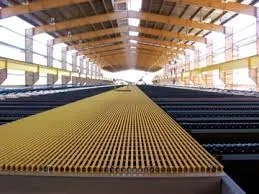
-
 Afrikaans
Afrikaans -
 Albanian
Albanian -
 Amharic
Amharic -
 Arabic
Arabic -
 Armenian
Armenian -
 Azerbaijani
Azerbaijani -
 Basque
Basque -
 Belarusian
Belarusian -
 Bengali
Bengali -
 Bosnian
Bosnian -
 Bulgarian
Bulgarian -
 Catalan
Catalan -
 Cebuano
Cebuano -
 China
China -
 China (Taiwan)
China (Taiwan) -
 Corsican
Corsican -
 Croatian
Croatian -
 Czech
Czech -
 Danish
Danish -
 Dutch
Dutch -
 English
English -
 Esperanto
Esperanto -
 Estonian
Estonian -
 Finnish
Finnish -
 French
French -
 Frisian
Frisian -
 Galician
Galician -
 Georgian
Georgian -
 German
German -
 Greek
Greek -
 Gujarati
Gujarati -
 Haitian Creole
Haitian Creole -
 hausa
hausa -
 hawaiian
hawaiian -
 Hebrew
Hebrew -
 Hindi
Hindi -
 Miao
Miao -
 Hungarian
Hungarian -
 Icelandic
Icelandic -
 igbo
igbo -
 Indonesian
Indonesian -
 irish
irish -
 Italian
Italian -
 Japanese
Japanese -
 Javanese
Javanese -
 Kannada
Kannada -
 kazakh
kazakh -
 Khmer
Khmer -
 Rwandese
Rwandese -
 Korean
Korean -
 Kurdish
Kurdish -
 Kyrgyz
Kyrgyz -
 Lao
Lao -
 Latin
Latin -
 Latvian
Latvian -
 Lithuanian
Lithuanian -
 Luxembourgish
Luxembourgish -
 Macedonian
Macedonian -
 Malgashi
Malgashi -
 Malay
Malay -
 Malayalam
Malayalam -
 Maltese
Maltese -
 Maori
Maori -
 Marathi
Marathi -
 Mongolian
Mongolian -
 Myanmar
Myanmar -
 Nepali
Nepali -
 Norwegian
Norwegian -
 Norwegian
Norwegian -
 Occitan
Occitan -
 Pashto
Pashto -
 Persian
Persian -
 Polish
Polish -
 Portuguese
Portuguese -
 Punjabi
Punjabi -
 Romanian
Romanian -
 Russian
Russian -
 Samoan
Samoan -
 Scottish Gaelic
Scottish Gaelic -
 Serbian
Serbian -
 Sesotho
Sesotho -
 Shona
Shona -
 Sindhi
Sindhi -
 Sinhala
Sinhala -
 Slovak
Slovak -
 Slovenian
Slovenian -
 Somali
Somali -
 Spanish
Spanish -
 Sundanese
Sundanese -
 Swahili
Swahili -
 Swedish
Swedish -
 Tagalog
Tagalog -
 Tajik
Tajik -
 Tamil
Tamil -
 Tatar
Tatar -
 Telugu
Telugu -
 Thai
Thai -
 Turkish
Turkish -
 Turkmen
Turkmen -
 Ukrainian
Ukrainian -
 Urdu
Urdu -
 Uighur
Uighur -
 Uzbek
Uzbek -
 Vietnamese
Vietnamese -
 Welsh
Welsh -
 Bantu
Bantu -
 Yiddish
Yiddish -
 Yoruba
Yoruba -
 Zulu
Zulu
Fiberglass Insulation Solutions for Pipe Fittings and Thermal Efficiency Improvement
Understanding Fiberglass Pipe Insulation Fittings A Comprehensive Overview
Fiberglass pipe insulation fittings are essential components in maintaining energy efficiency and temperature regulation in various piping systems. Often used in commercial, industrial, and residential applications, these fittings stand out due to their excellent thermal insulation properties, resistance to moisture, and durability. In this article, we will explore the advantages, applications, and installation processes related to fiberglass pipe insulation fittings.
What are Fiberglass Pipe Insulation Fittings?
Fiberglass pipe insulation fittings are specialized covers or wraps designed to insulate pipes and other infrastructure components. Made from fiberglass, these fittings are typically lightweight and easy to install. The primary purpose of these fittings is to minimize heat loss or gain, thereby enhancing the efficiency of heating and cooling systems.
Advantages of Fiberglass Pipe Insulation Fittings
1. Thermal Efficiency Fiberglass insulation fitting provides excellent thermal resistance (R-value). This resistance reduces heat loss in hot water pipes and helps prevent condensation in cooler pipes. As a result, energy costs are lowered, and systems operate more efficiently.
2. Moisture Control The fiberglass material is inherently resistant to moisture, preventing the formation of mold and mildew. This is particularly beneficial in environments with high humidity levels, as it helps to maintain air quality and system integrity.
3. Corrosion Resistance Unlike some traditional insulation materials, fiberglass is not susceptible to corrosion. This feature is crucial for the longevity of the piping system, especially in industrial settings where harsh chemicals are present.
4. Ease of Installation Fiberglass insulation fittings are designed for quick and straightforward installation. They often come with pre-fabricated shapes that fit standard pipe sizes, reducing the time and labor required during installation.
5. Fire Safety Many fiberglass insulation products are constructed to be fire-resistant, ensuring that they meet safety codes and reduce risk in case of fire hazards.
Applications of Fiberglass Pipe Insulation Fittings
Fiberglass pipe insulation fittings are widely used across different sectors
- HVAC Systems They are predominantly used in heating, ventilation, and air conditioning (HVAC) applications to insulate ductwork and piping. This helps in maintaining the desired temperatures within a building.
fiberglass pipe insulation fittings

- Industrial Processes In manufacturing and processing plants, fiberglass fittings are used to insulate pipes carrying hot or cold liquids. This is crucial for process efficiency and safety.
- Plumbing Systems Fiberglass insulation fittings can be applied in plumbing systems to reduce heat loss in hot water pipes, enhancing water heating efficiency.
- Refrigeration Applications In refrigeration, insulated fittings help maintain low temperatures in piping systems, contributing to overall energy efficiency.
Installation Process
Installing fiberglass pipe insulation fittings is a straightforward process that can be carried out by professionals or skilled DIYers. Below are the general steps to ensure proper installation
1. Preparation Before installing, assess the pipes and ensure they are clean and free from any debris or moisture.
2. Measuring Measure the dimensions of the pipes accurately to select the correct size of insulation fittings.
3. Fitting Application Place the fiberglass fittings over the pipe. Ensure they fit snugly and overlap where necessary to provide complete insulation.
4. Securing Secure the fittings in place using appropriate adhesive, tape, or mechanical fasteners if necessary.
5. Final Inspection After installation, perform a final inspection to ensure that all joints are sealed and that the insulation is intact.
Conclusion
Fiberglass pipe insulation fittings are vital for ensuring energy efficiency, safety, and reliability in various piping systems. Their thermal properties, moisture resistance, and ease of installation make them a preferred choice in multiple applications. Understanding their benefits and proper installation techniques can help users maximize performance and maintain costs effectively. Choosing the right insulation is not just about efficiency; it’s an investment in sustainability and the long-term reliability of infrastructure.









